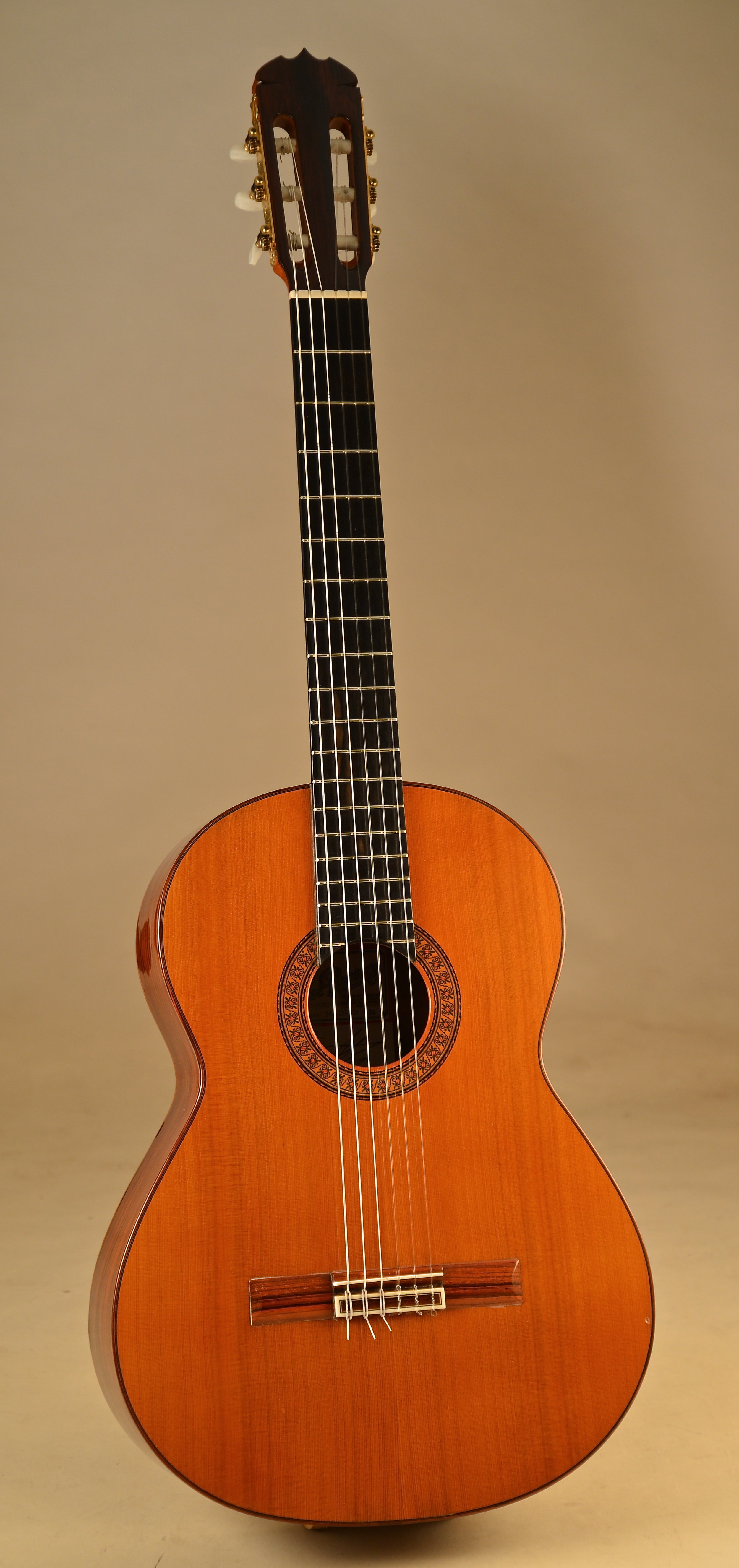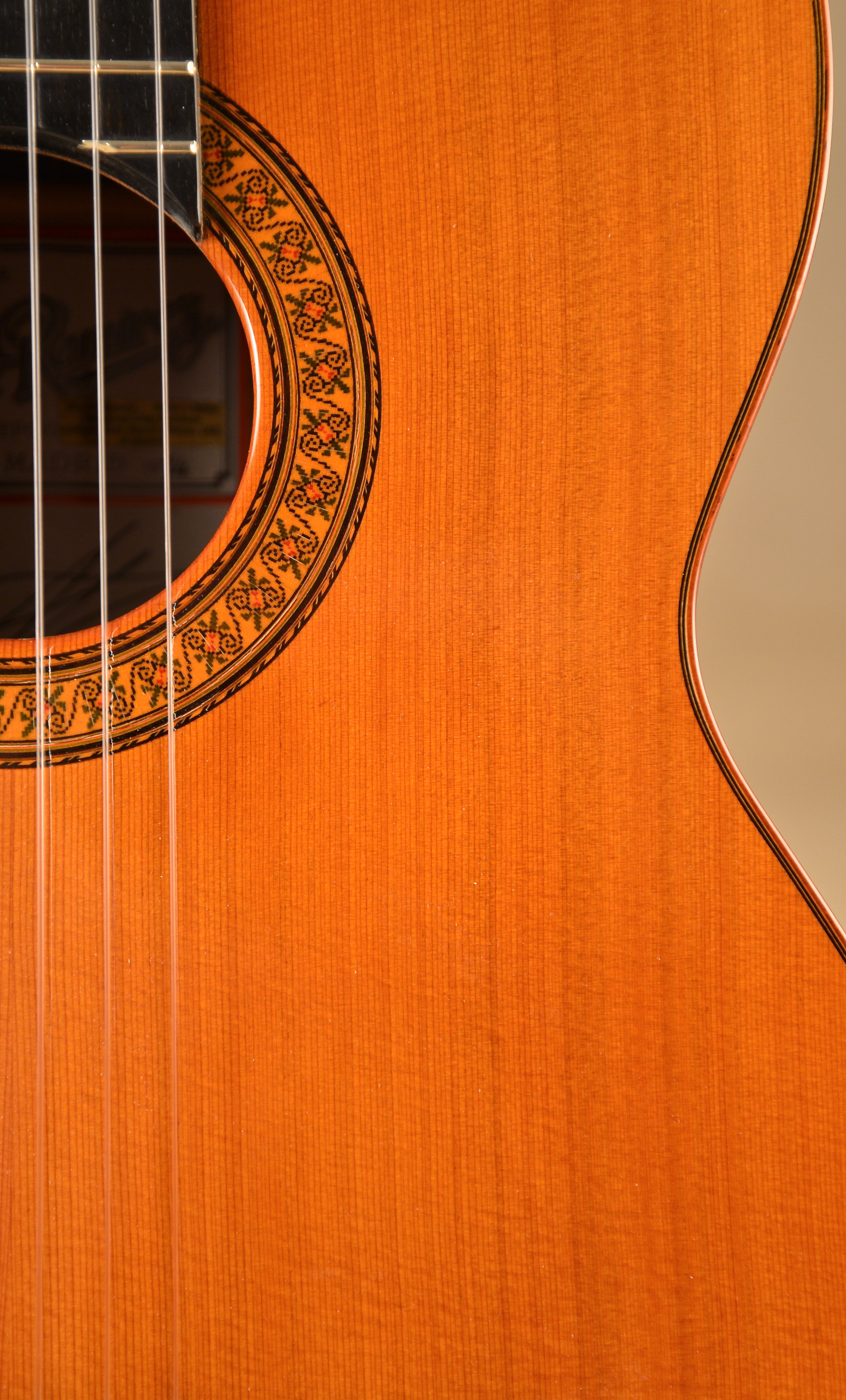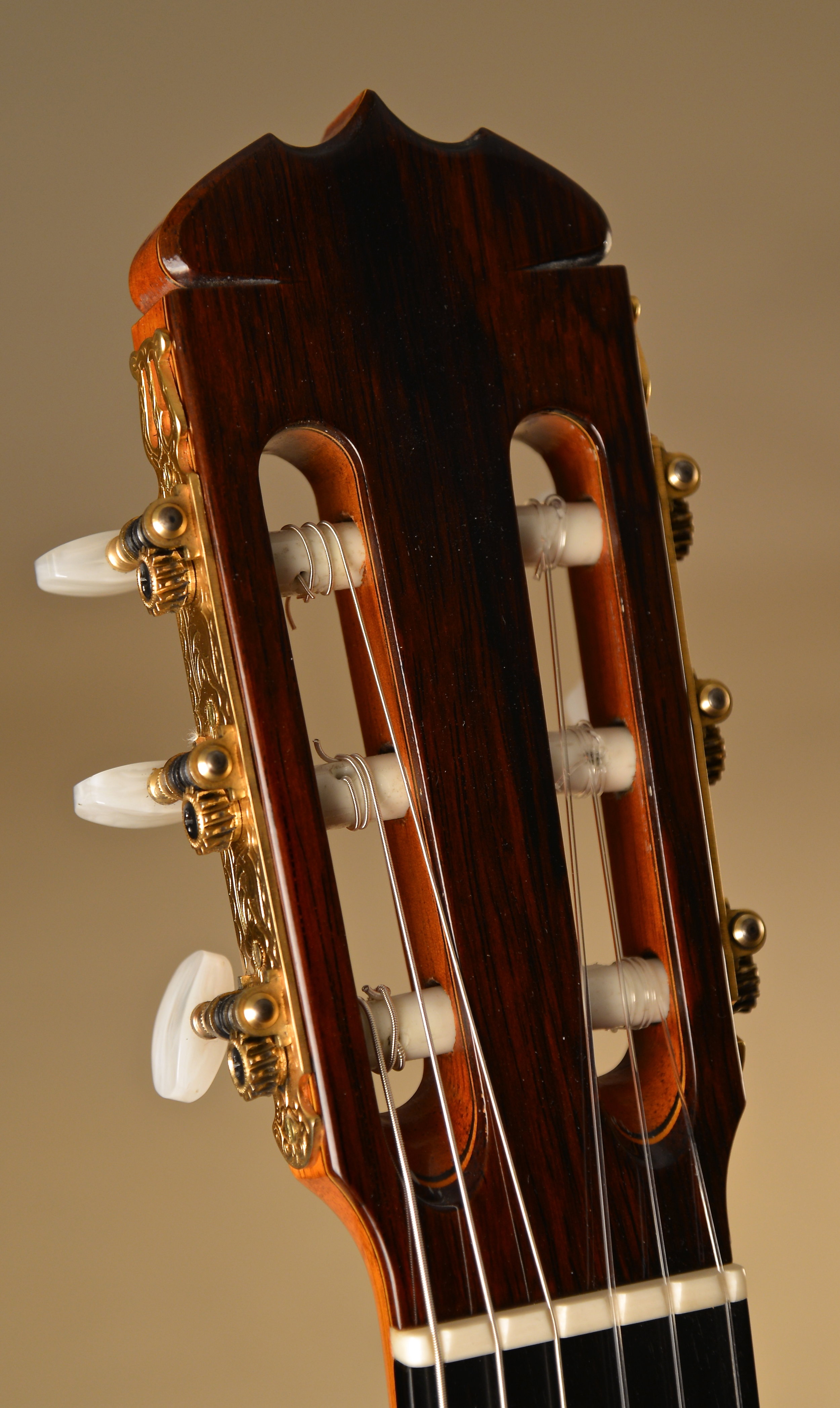1974 José Ramírez R-1455
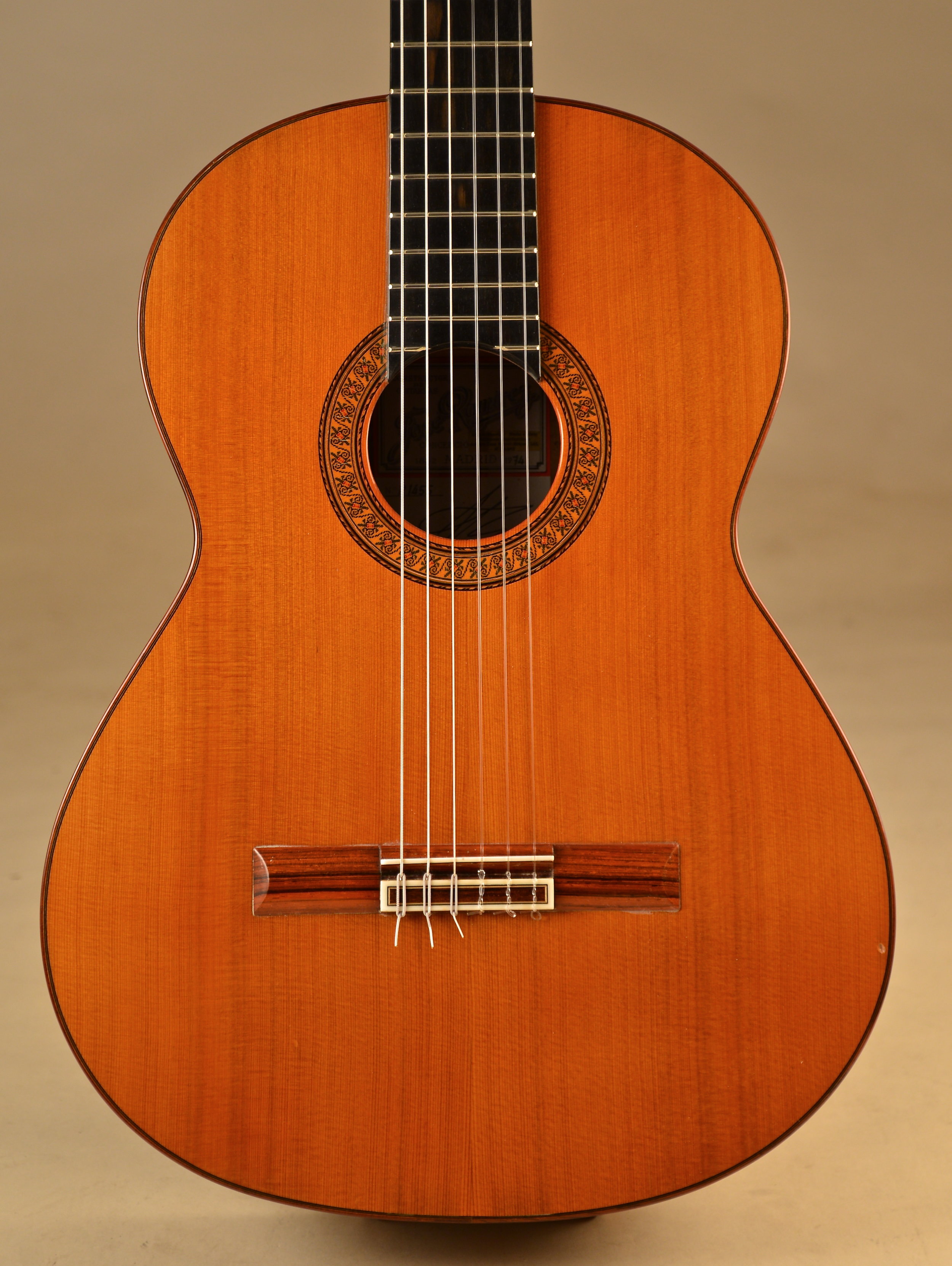
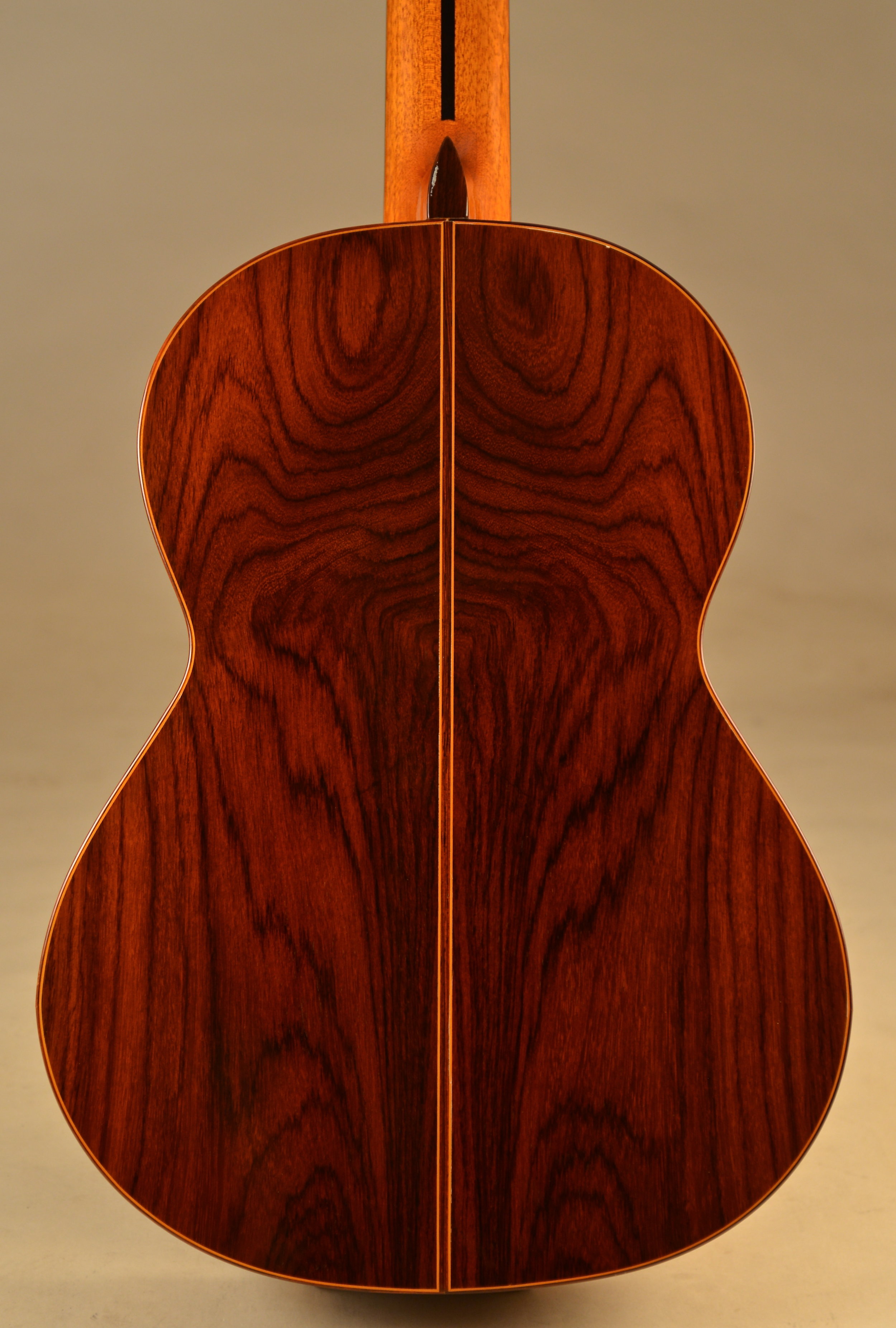
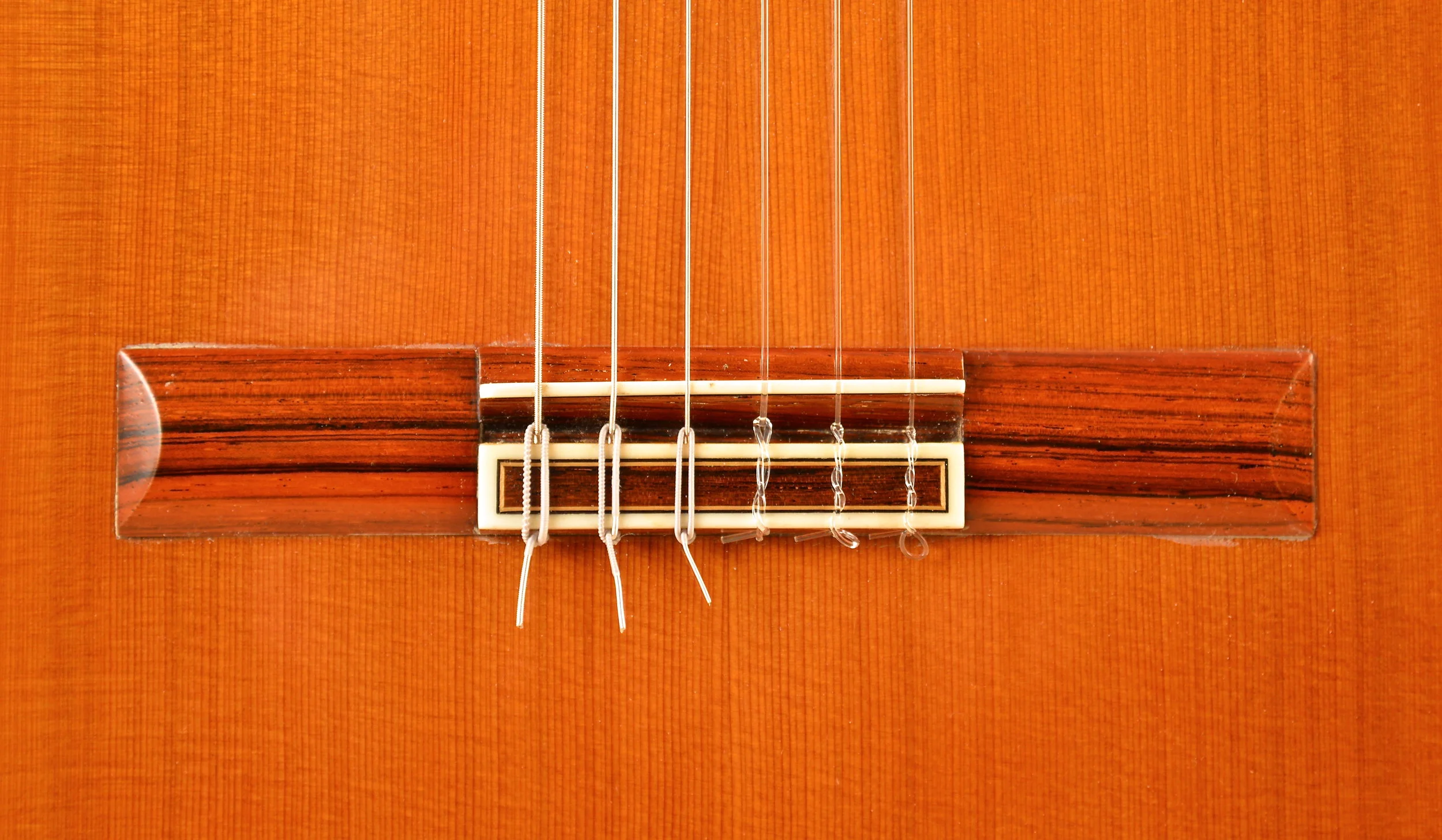
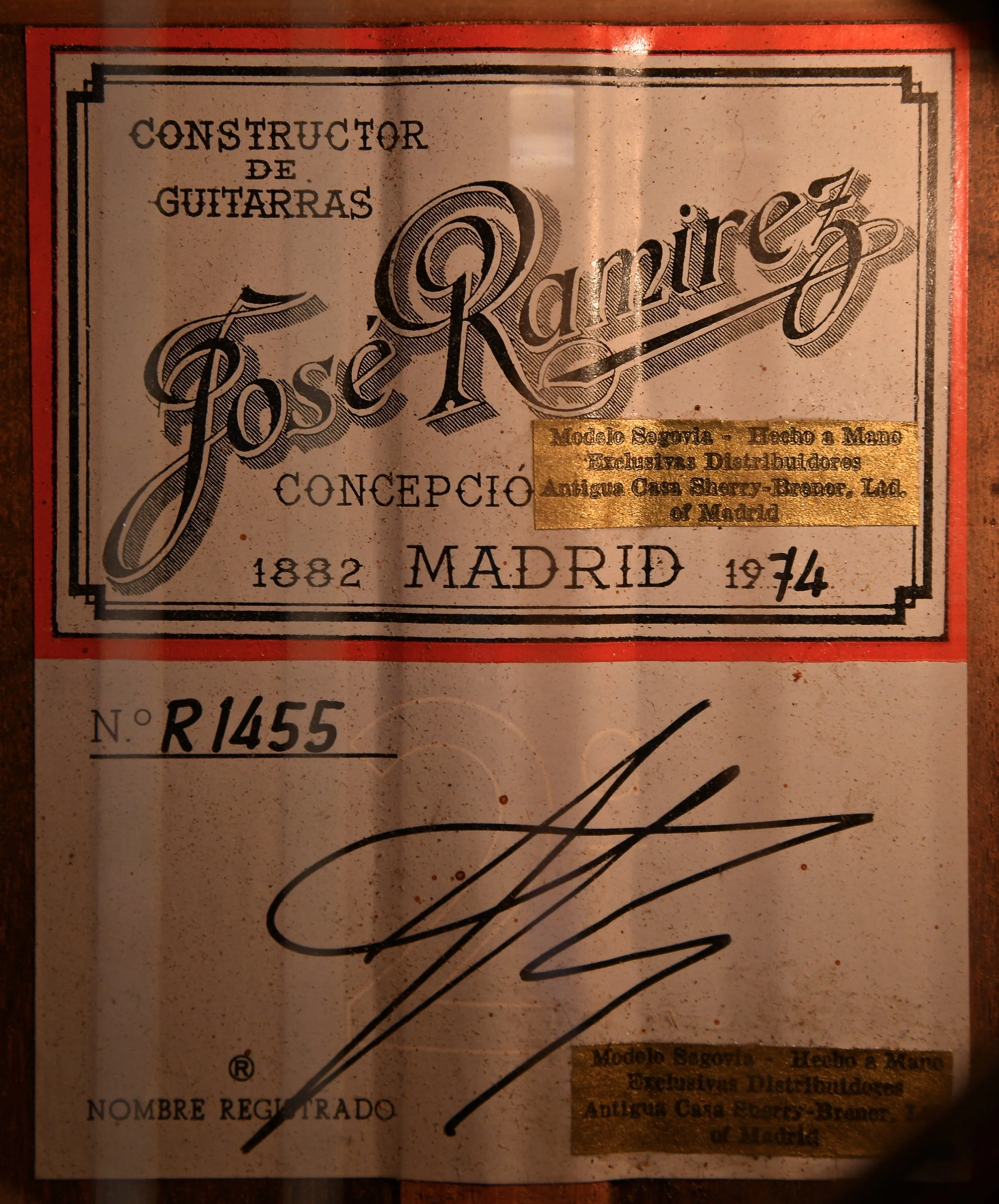
1974 José Ramírez III 2a (Spain) No R-1455, 664 mm scale, 53 mm nut, strings are spaced 45 mm on centers between 1st and 6th, action at the 12th fret is 4.5 mm on the bass side, 3 mm on the treble side, there is still 1.5 mm of saddle projecting above the bridge on the bass side. Cedar top, Indian rosewood sides and back, sides are laminated with Spanish cypress internally, original catalyzed urethane varnish, embossed gold Fustero tuning machines. Condition is near mint with one visible small bonk on the top by the lower treble bout and some minor back center seam stress apparent which in no way affects the utility nor longevity of the instrument. Yes, we know the sides and back are supposed to be Brazilian rosewood according to the catalog specifications, but we are certain this is slab sawn Indian with a reddish tint added to the varnish, not Brazilian rosewood. These 2a (“segunda”) Ramírez instruments were virtually identical to the 1a models save for the wood and machine head selection, internally they are indistinguishable. Actions varied considerably with 1a and 2a instruments depending on which specific solera (work board) they were assembled on, which is one of the reason the initials or identity of the specific maker is pointless in establishing the quality and playability of the instrument, which is why we discourage focusing on this detail. Judge the instrument, not the label or stamp. This instrument is a great example of the early 70’s Ramírez model which was revolutionary at the time, having many non-traditional features such as laminated sides, sprayed finishes, and synthetic glue used to assemble them. The sound is huge with a bright penetrating treble and firm focused bass, very colorful, the embodiment of what some call the modern “Madrid School” of guitar making. Playing instruments such as this Segovia was able to project to the furthest seats of the largest concert halls during his world tours without amplification. Don’t let the scale length put you off, the playability of an instrument is more dependent on the action than the scale length, and this instrument is highly playable. $6,500
